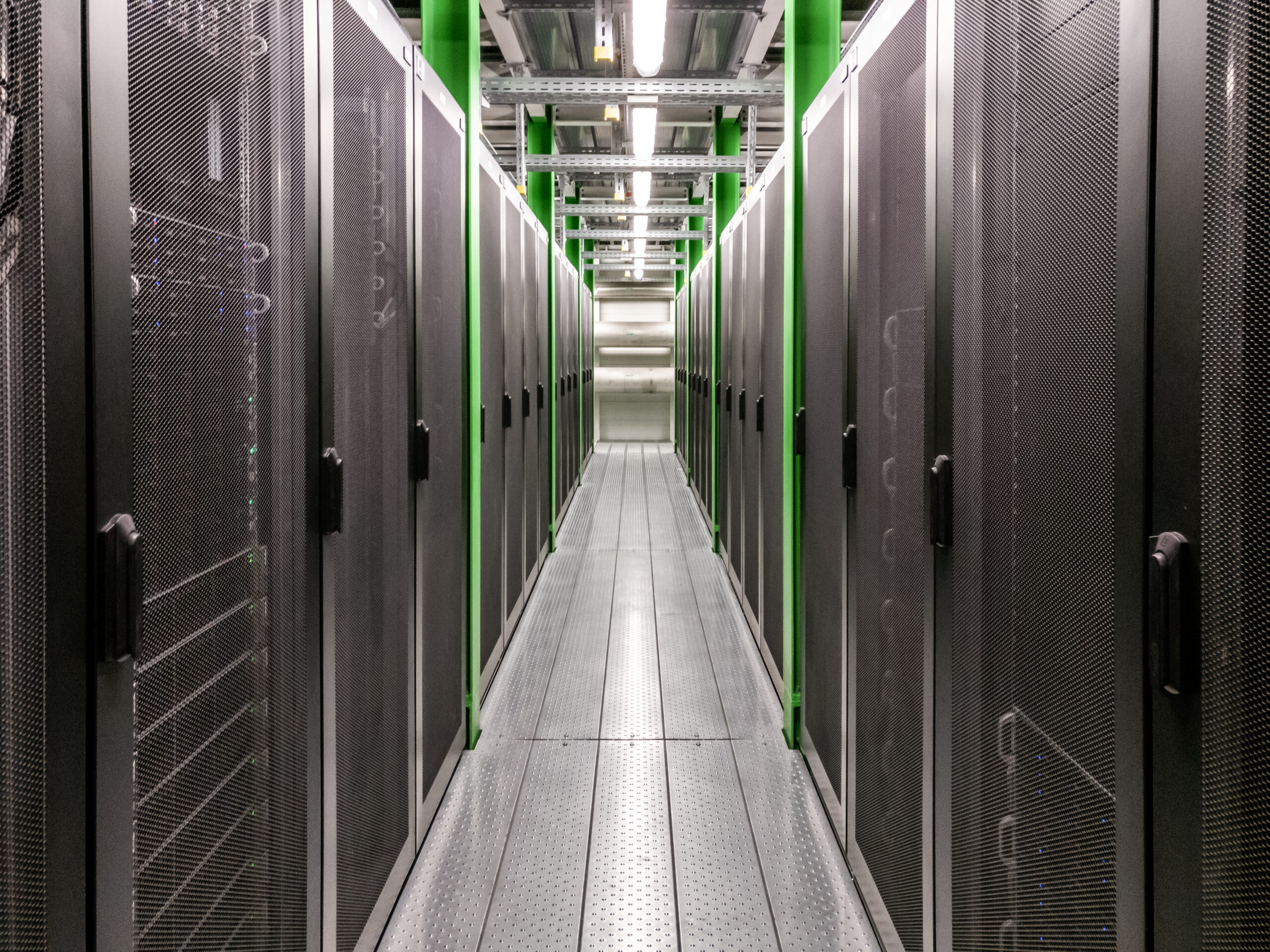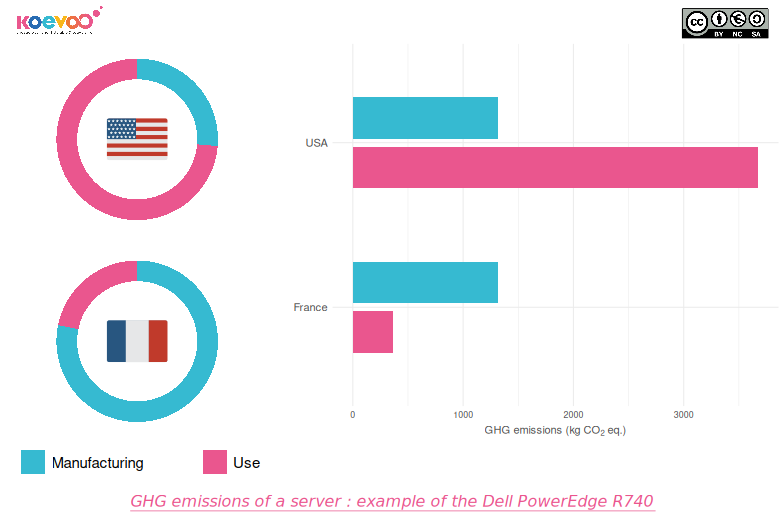Posted on
October 25th 2024
Tags
Data centers in France vs the USA : environmental impact compared

These last few months, several major tech companies, including Microsoft and Amazon, have announced massive investments in France for the development of data centers. These large, secure buildings, contain the servers that host our data and the digital services we use every day.
There are many reasons why multinationals choose a country over another to locate their data centers (or datacenters), and environmental issues are too rarely taken into consideration in that decision. Yet, like all parts of the digital infrastructure, data centers have a significant environmental impact. Then, is there any difference, from an environnemental point of view, between a server hosted in France or the United States of America ? There are 2 interesting points to consider here :
- Locating data centers closer to the end-users (in this case, in France rather than the USA for French or European users) limits the distance traveled by data, thus reducing the number of network equipment used to transfer this data. Hosting data in France can therefore limit the environmental impacts of network infrastructures, although these impacts are poorly documented and consequently difficult to quantify.
- The second point to consider is better known and easier to quantify: the carbon intensity of the electricity mix in the country hosting the data center. Data centers consume large amounts of electricity to run their servers 24/7 and to power their essential cooling systems. France has a low-carbon electricity mix, which limits the greenhouse gas emissions associated with data centers operations.

In the graph above, we consider the use of the same server in the 2 countries. This is why the environmental impacts associated with the manufacturing of the server (light blue bar) is identical in both cases. This shows the enormous impact of the sole criterion of geographical location for hosting computer servers. This explains why, in the USA, the focus of environmental discourse is on reducing energy consumption, while in France, it is mainly on the manufacturing (and therefore life extension) of equipments.
This shows the enormous impact of the sole criterion of geographical location for hosting computer servers.
Hosting data centers in France can thus minimize the carbon footprint of digital use, i.e. the scope 2 of carbon accounting. However it does not change the impact of equipment manufacturing, nor the impact of the data centers construction (on that last point, differences do exist and can be observed, not between countries but rather between buildings, depending on architectural choices such as wood or concrete structures), and these impacts are far from negligible(1).
To reduce the carbon footprint of data centers, and more widely their environmental footprint (taking into account impacts on abiotic ressources, water, biodiversity, etc…), the only possible solution to date is to adopt sobriety in usage, to limit the amount of services and therefore the number of data centers required.
💡 Tip !
Do you use cloud services ? If so, choose where to host your data by:
- checking the carbon intensity of the electricity mix for the proposed zones at https://app.electricitymaps.com/
- selecting the zone with the lowest carbon intensity is a first step to lower your digital carbon footprint !
PS : the next step is to implement an eco-design process for your digital services, Koevoo can help you, feel free to contact us at bonjour@koevoo.tech.
(1) Bordage, F. (2019). Empreinte environnementale du numérique mondial. Paris, greenit. fr
©Photo Wirestock, Freepik ; Flag icons from Smashicons, Flaticon.
Explore the data with Koevoo :
The figure above is based on data supplied by Dell for the PowerEdge R740 server. The LCA (Life Cycle Analysis) conducted by the manufacturer shows that the manufacturing of the server emits 1313,28 kg CO2 eq. It also states that the annual electricity consumption of the server is 1760,3 kWh and that the expected lifetime of the product is 4 years. We can thus estimate that the server will consume 7041,2 kWh of electricity to run throughout its lifetime (1760,3 x 4).
As for the emission factors associated with electricity consumption in the 2 countries, the most recent data available in the impacts database of ADEME at the time of writing this article are as follows:
– USA : 0,522 kg CO2 eq./kWh (10 % uncertainty)
– France : 0,0520 kg CO2 eq./kWh (10 % uncertainty)
Therefore, running the server throughout its lifetime would emit 366 kg CO2 eq. (0,0520 x 7041,2) in France and 3680 kg CO2 eq. in the USA (0,522 x 7041,2).
These data are estimates and are subject to uncertainties. In particular, Dell indicates that its LCA data are subject to significant uncertainty (detailed quantification not available).
Other posts
Every post >Contact
Let's meet !
Thank you for reading our blog. If you wish to find out more, feel free to contact us.
Koevoo needs the contact details you provide to contact you about our products and services. You can unsubscribe from these communications at any time. See our Privacy Policy to learn more about how to unsubscribe, our privacy policies and our commitment to privacy.
